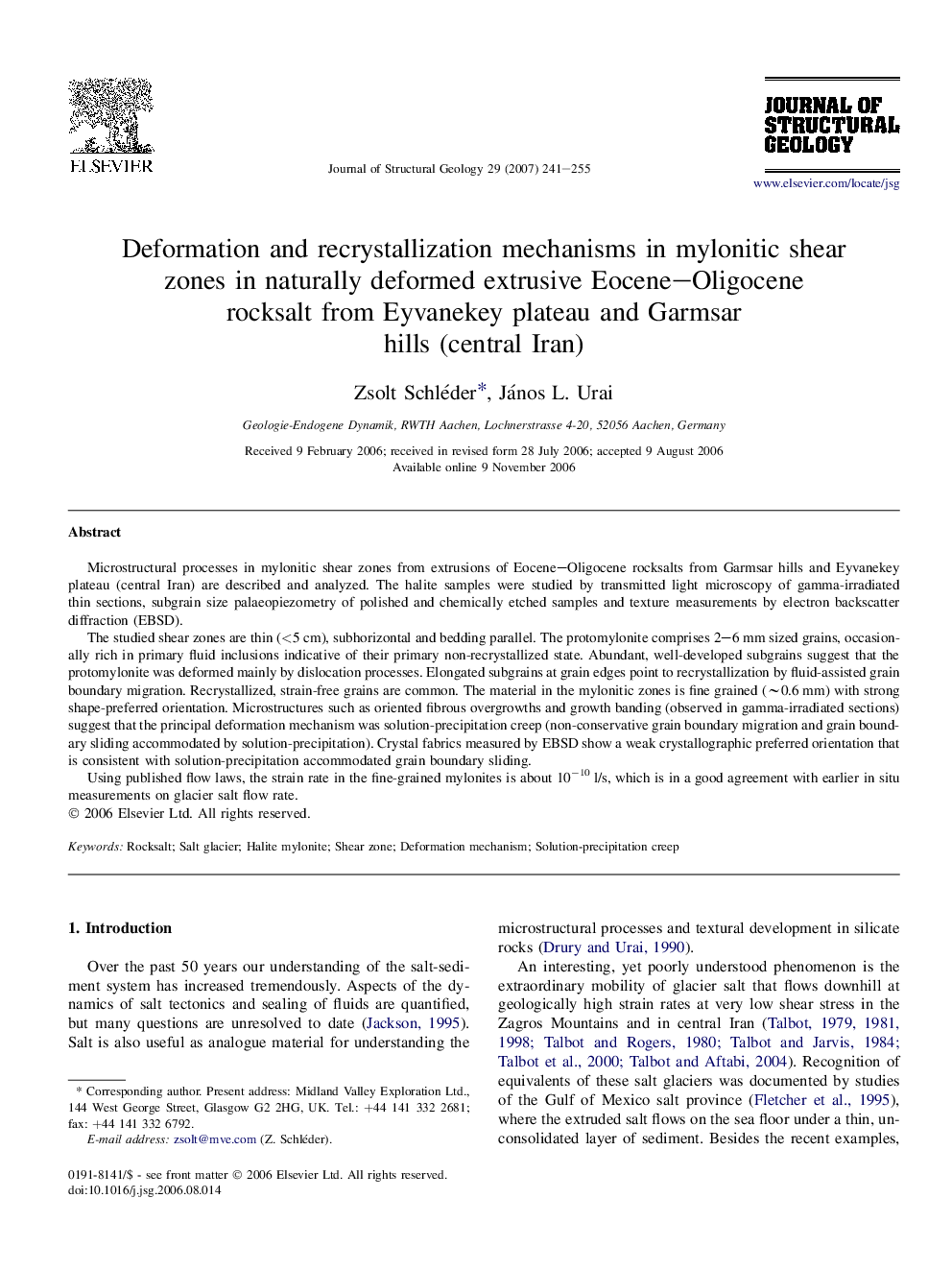| Article ID | Journal | Published Year | Pages | File Type |
|---|---|---|---|---|
| 4734224 | Journal of Structural Geology | 2007 | 15 Pages |
Microstructural processes in mylonitic shear zones from extrusions of Eocene–Oligocene rocksalts from Garmsar hills and Eyvanekey plateau (central Iran) are described and analyzed. The halite samples were studied by transmitted light microscopy of gamma-irradiated thin sections, subgrain size palaeopiezometry of polished and chemically etched samples and texture measurements by electron backscatter diffraction (EBSD).The studied shear zones are thin (<5 cm), subhorizontal and bedding parallel. The protomylonite comprises 2–6 mm sized grains, occasionally rich in primary fluid inclusions indicative of their primary non-recrystallized state. Abundant, well-developed subgrains suggest that the protomylonite was deformed mainly by dislocation processes. Elongated subgrains at grain edges point to recrystallization by fluid-assisted grain boundary migration. Recrystallized, strain-free grains are common. The material in the mylonitic zones is fine grained (∼0.6 mm) with strong shape-preferred orientation. Microstructures such as oriented fibrous overgrowths and growth banding (observed in gamma-irradiated sections) suggest that the principal deformation mechanism was solution-precipitation creep (non-conservative grain boundary migration and grain boundary sliding accommodated by solution-precipitation). Crystal fabrics measured by EBSD show a weak crystallographic preferred orientation that is consistent with solution-precipitation accommodated grain boundary sliding.Using published flow laws, the strain rate in the fine-grained mylonites is about 10−10 l/s, which is in a good agreement with earlier in situ measurements on glacier salt flow rate.
